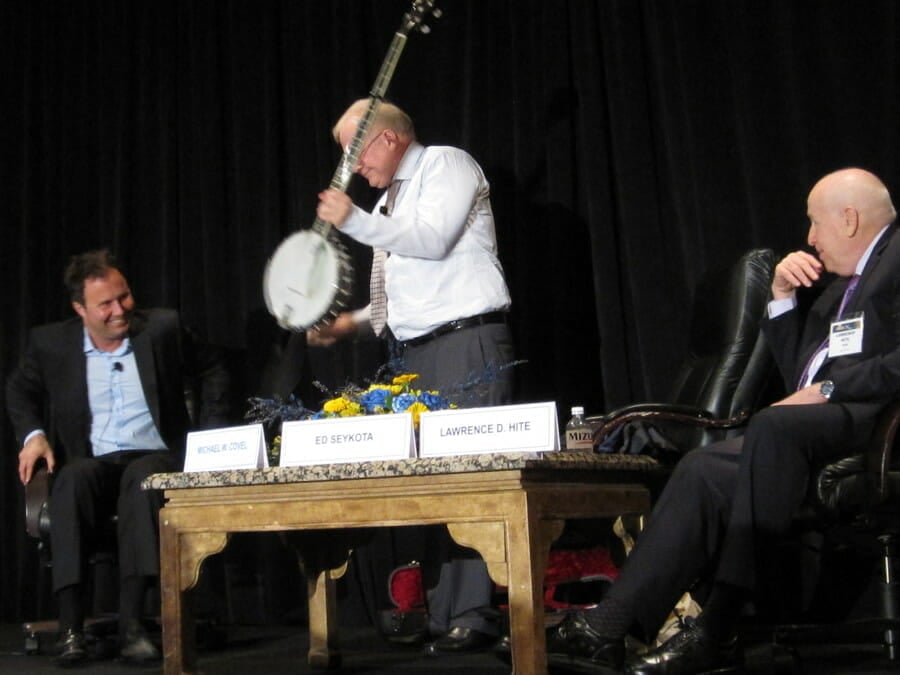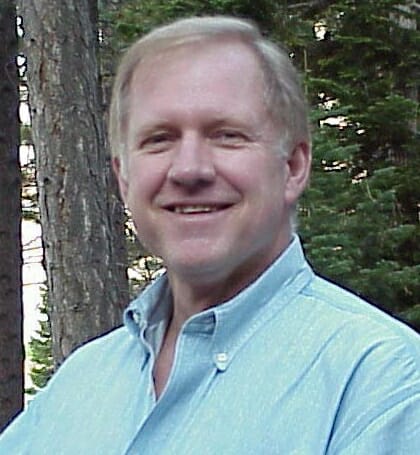
After you enter the world of markets and investing, you will eventually run across the book Market Wizards, by Jack Schwager. Of all the trader interviews in Market Wizards, the most memorable is the one with Ed Seykota. While some may perceive Seykota’s manner as extremely direct, most will agree Seykota is unique in the way he thinks. One profound and now famous statement of his is, “Everybody gets what they want out of the market.” This was a response to a question about trading, but I feel certain that Seykota would say it also applies to life.
Although almost completely unknown to both traders and laymen alike, Seykota’s achievements rank him as one of the best trend followers (and traders) of our time. I first met Seykota at a small beachside cafe. I had received an invitation from Seykota to get together to discuss the outreach possibilities of the Internet. During our first meeting, he asked me what I thought Richard Dennis was looking for when he hired his student traders, the Turtles (Seykota knew I had a website called TurtleTrader). My reply was to say, “I thought Dennis was looking for students who could think in terms of odds.” Seykotas response was to ask me if my reply was my own thinking or something I was told by someone else. This was my first indoctrination to Seykota’s direct nature.
The following story passed along from an associate is pure Seykota: I attended a day-long seminar in February 1995 in Toronto, Canada where Seykota was one of the guest speakers. The WHOLE audience peppered Seykota with questions like: Do you like gold, where do you think the Canadian $ is headed, how do you know when there is a top, how do you know when the trend is up, etc. To each of these, he replied: I like gold, its shiny, pretty, makes nice jewelry, or I have no idea where the Canadian dollar is headed, or the trend is up when price is moving up, etc.
His replies were simple, straight-forward answers to the questions asked of him. Later, I learned through the event organizer that a large majority of the audience (who paid good money, presumably to learn the secrets of trading from a market wizard) were not impressed. Many felt they had wasted their time and money listening to Seykota. Seykota’s message couldn’t be clearer to anyone who cared to listen. The answers were found in the very questions each person asked. Don’t ask, “How do you know the trend is moving up?” Instead, ask, “What is going to tell me the trend is up?” Not, “What do you think of gold?” Instead, ask, “Am I correctly trading gold?” Seykota’s answers effectively placed everyone in front of a huge mirror, reflecting their trading self back at them.
How would you have reacted to Seykota’s speech? Walk out or be curious? Think about it… He literally has been a one-man shop his entire career. There is no fancy office or other employees. He does not hold himself out as a money manager and he is extremely selective of his clients. He doesn’t really care whether people have money that they want him to trade or not. I’ve had the chance to review his monthly performance data for the decade of the 1990s. The month-by- month numbers are eye popping. Seykota takes big risks, and he gets big rewards.
Becoming a Market Wizard

Seykota was born in 1946. He earned his Bachelor of Science from MIT in 1969 and by 1972 had embarked on the trading career he pursues to this day, investing for his own account and the accounts of a few select others. He was self-taught, but influenced in his career by Amos Hostetter and Richard Donchian. Early in his career, Seykota was hired by a major broker. He conceived and developed the first commercial computerized trading system for client money in the futures markets. According to Jack Schwagers Market Wizards, he increased one clients account from $5,000 to $15,000,000 in just 12 years.
For the past few years, Seykota has worked from a home office in Incline Village, Nevada. His trading is largely confined to thefew minutes it takes to run his internally written computer program, which generates trading signals for the next day. He also mentors traders through his Web site and his Trading Tribe, a widespread community of like-mintded traders. He has served as a teacher and mentor to some great traders, including Michael Marcus and David Druz:
- Win or lose, everybody gets what they want out of the market. Some people seem to like to lose, so they win by losing money.
- To avoid whipsaw losses, stop trading.
- Risk no more than you can afford to lose and also risk enough so that a win is meaningful.
- Trend following is an exercise in observing and responding to the ever-present moment of now.
- Fundamentalists and anticipators may have difficulties with risk control because a trade keeps looking better the more it goes against them.
- Until you master the basic literature and spend some time with successful traders, you might consider confining your trading to the supermarket.
- I don’t predict a non-existing future.
- The aha! process lies at the heart of price change. For instance, consider the series: OTTFFSSE. What is the next letter? This puzzle creates tension – until you see the first letters of the ordinal numbers – one, two. Aha! you say. A lot happens during an aha. The puzzle dies and the tension dissipates. A societal aha! drives price. Read the newspapers and the news magazines during a major move. At first, no one gets why the move is happening. There’s a lot of confusion. Part of the move’s way up, some people get it. At the end, everybody gets it. The tension is resolved and the move ends.
Schwager and Seykota Q&A
Q. How did you first get involved in trading?
A. In the late 1960s, I decided that silver had to rise when the U.S. Treasury stopped selling it. I opened a commodity margin account to take full advantage of my insight. While I was waiting, my broker convinced me to short some copper. I soon got stopped out and lost some money and my trading virginity. So I went back to waiting for the start of the big, inevitable bull market in silver. Finally, the day arrived. I bought. Much to my amazement and financial detriment, the price started falling! At first it seemed impossible to me that silver could fall on such a bullish deal. Yet the price was falling and that was a fact. Soon my stop got hit. This was a very stunning education about the way markets discount news. I became more and more fascinated with how markets work. About that time, I saw a letter published by Richard Donchian, which implied that a purely mechanical trend following system could beat the markets. This too seemed impossible to me. So I wrote computer programs (on punch cards in those days) to test the theories. Amazingly, his [Donchian] theories tested true. To this day, I’m not sure I understand why or whether I really need to. Anyhow, studying the markets, and backing up my opinions with money, was so fascinating compared to my other career opportunities at the time, that I began trading full time for a living.
Ed Seykota: The Whipsaw Song
Ed Seykota Interview
Listen to my interviews with Ed Seykota here. And read more in my Trend Following book and here.
